1887. In a place to the north of the city of Las Palmas where Majorcan missionaries in the 15th century had erected a chapel dedicated to Saint Catherine several British companies financed the construction of a new port. Trade between London and the islands was so important that ended up giving name to an area of the docks of the British capital, Canary Wharf , so new infrastructures were needed that could support this traffic and make it grow.
The Canary Islands Company Limited then decides to build a hotel in the place. One of his partners, Donald Currie, had business in South Africa and thought of Las Palmas as a strategic stop . A stopover that would also allow travelers to rest a few days on land with all the comfort of the great British hotels overseas.
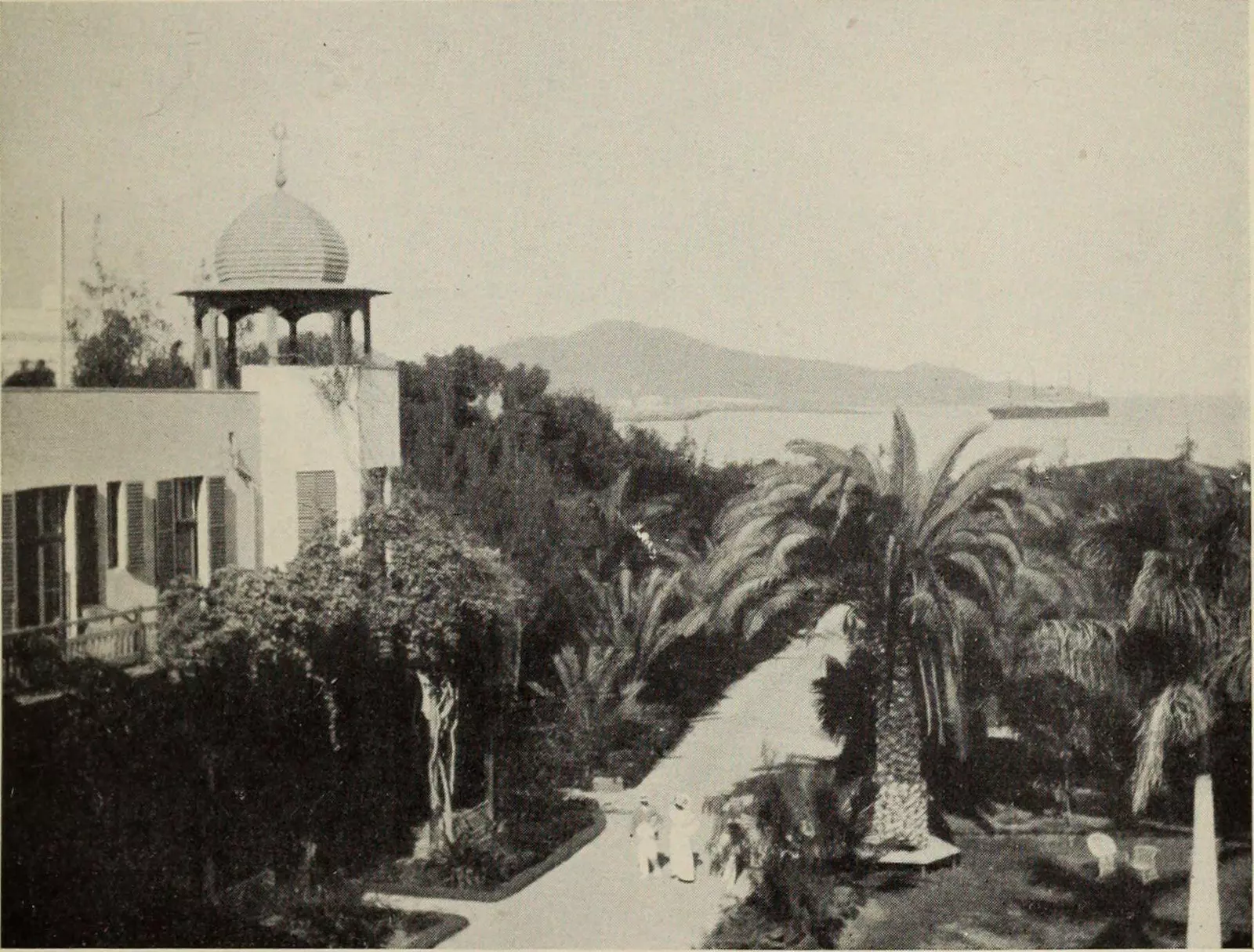
The hotel garden in 1908.
The project Scotsman James Maclaren was commissioned and opened its doors just two years later, in December 1889. Next to it was inaugurated what would be the first golf course in Spain . The complex was something never seen before on the islands, an impressive building with an orientalizing aspect that became the core of what was then became known as the English Quarter and an obligatory stop on British routes to the south.
The success of this first great canary hotel it was such that already in 1904, barely 15 years after its inauguration, a first extension was considered. Unfortunately, international events (World War I and the Spanish Civil War) were quick to put his story on hold.
THE CONSOLIDATION OF AN ICON
The municipality of Las Palmas, which had acquired the property in 1931, faces after the war an integral recovery of the project, trying to revive that first period splendor of tourism in the city and take it one step further. The building is practically completely redone, respecting the volumes and adding elements that make it unique.
The result is one of the key works of the neocanarista style , to which in this case similarities have been sought with the Beverly Hills style that was fashionable in Los Angeles at the same time. There are balconies that look at the Canarian tradition, but at the same time the facade is crowned with oriental domes, a symbol of that origin in the British colonial routes. all passed by filter of the rationalist architecture of the moment and giving rise to a building of unclassifiable charm.
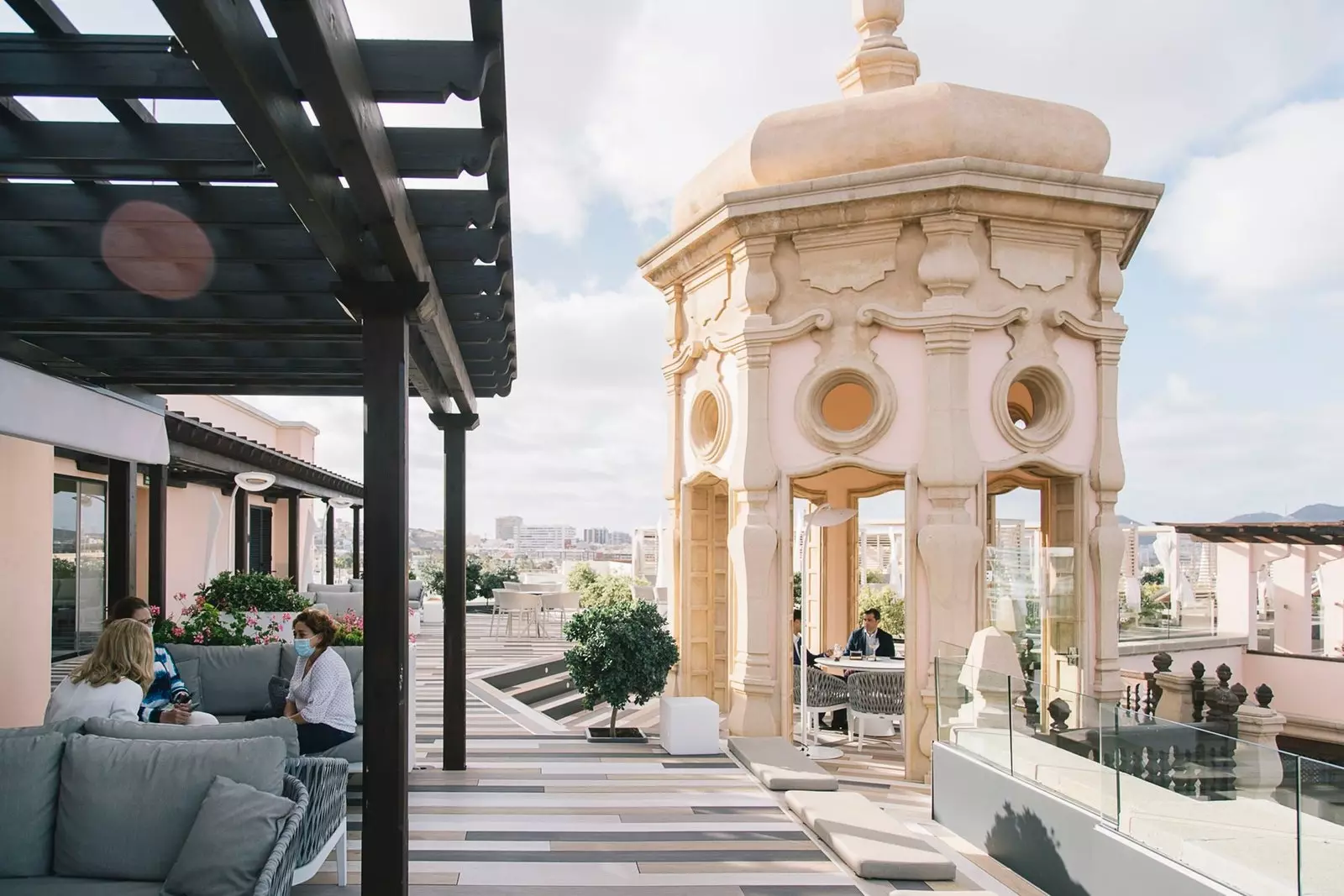
Terrace.
The lamps are ordered the Madrilenian silversmith Durán , the pieces of glass are designed in Murano . The surroundings of the hotel are reformed by Nicolas Rubio Tuduri , the great landscaper of those years, author, among others, of the Montjuic and Guinardó parks in Barcelona.
The interior is not far behind. Frescoes are commissioned from Jesús Arencibia, a key name of the muralism of the time and acquired oil paintings by Manuel Martín González and Santiago Santana , which turns the hotel into a permanent exhibition of contemporary Canarian art. It is also designed a bar –El Carabela– in the style of London clubs . Almost 30 years later, the hotel reopens its doors.
Are glorious decades in which the Santa Catalina , which reopens with a dinner offered to the President of Liberia, welcomes guests such as Maria Callas, Winston Churchill, Gregory Peck, Avar Gardner, Sophia Loren or Agatha Christie; years in which the hotel also became the center of the social and political life of the city and comes to have a casino in its facilities.
THE RENAISSANCE
Time, however, does not pass in vain. And little by little the hotel is leaving behind its former splendor.
It is at that moment when the Barceló chain takes over the management of the property . After an investment of more than 40 million euros and years of reforms, the Santa Catalina is reborn in 2020 as Santa Catalina, A Royal Hideaway Hotel 5*GL to once again become the spearhead of the hotel industry on the island.
Today the complex adds to the charm of its historic main building a whole series of attractions: the entrance park is closed at night to preserve the tranquility of the guests, a Wellness & Fitness Center has been created , opens in Alis Rooftop , a space that revolves around a infinity pool . A true luxury in the heart of the city.
The hotel does, in this new stage, a firm commitment to culture and gastronomy . The Canarian art collection has been enriched with works by muralist Fernando Álamo and originals by Martín Chirino They are exhibited in different rooms of the complex.
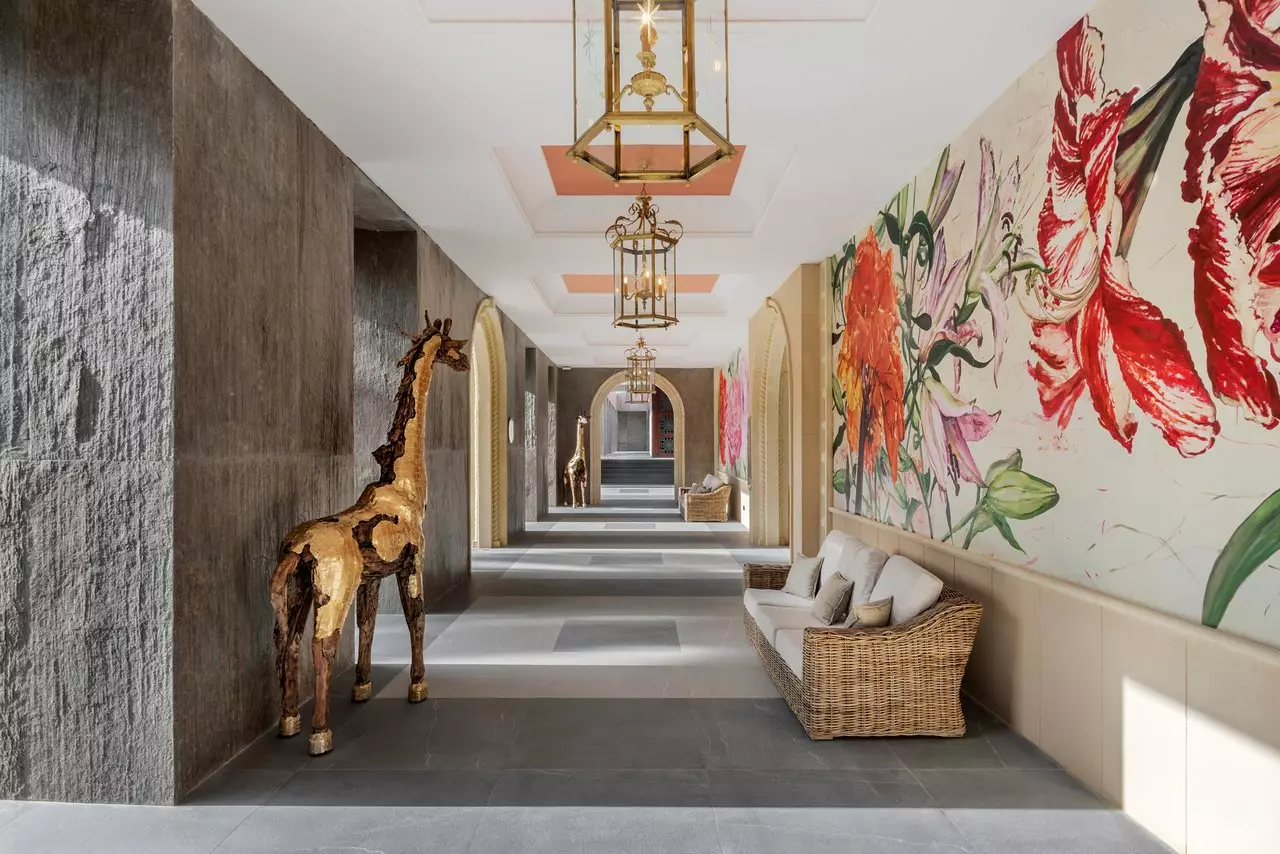
The new (and renovated) corridors of the hotel.
The gardens in front of the entrance are, from this year, headquarters of the Santa Catalina Classics, heir to the already mythical Formentor Sunset Classics , an essential event for music lovers from all over the world that had in its first edition the presence of Gustavo Dudamel and the Mahler Chamber Orchestra.
Gastronomically, the hotel also becomes a benchmark with the opening of its restaurant Poemas by Hermanos Padrón, the landing on the island of Juan Carlos and Jonathan Padrón, who have a star in their restaurant in Tenerife, and with the creation of HSC Fine Dining Collection , a series of events that are bringing some of Europe's best chefs to the hotel for one-of-a-kind dinners.
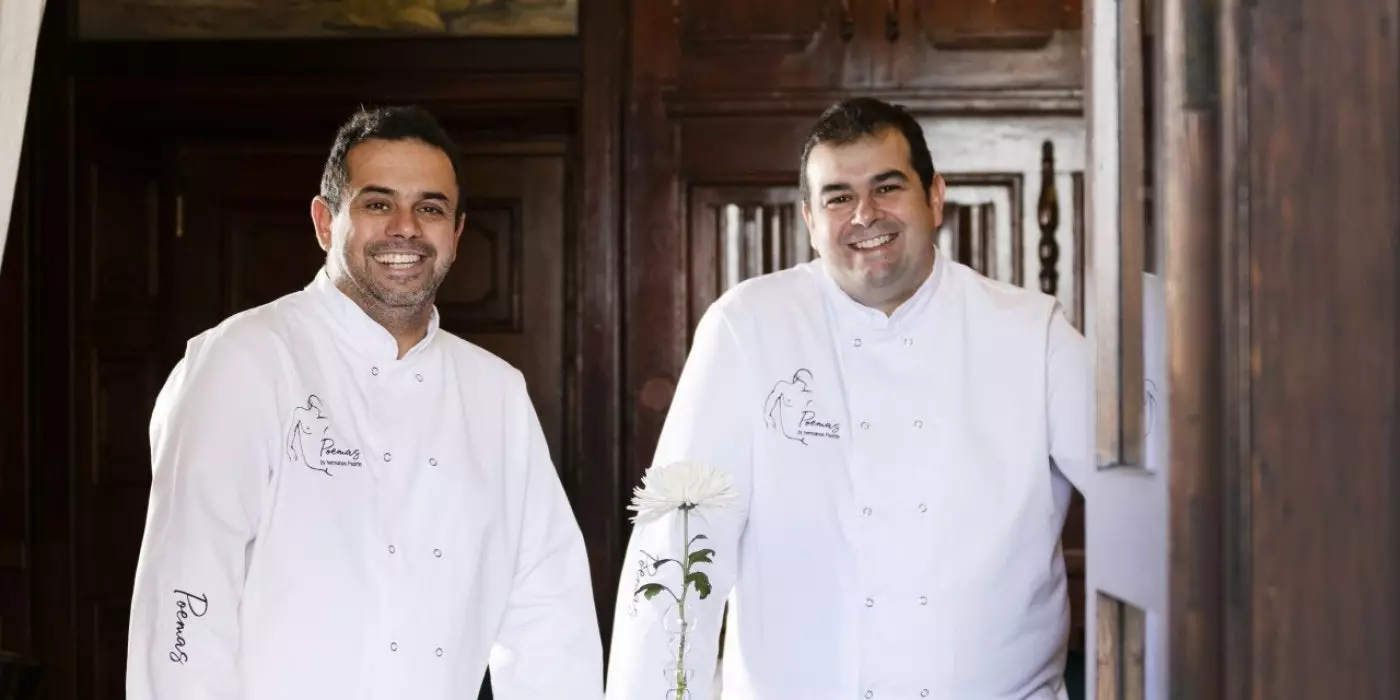
Juan Carlos and Jonathan Padron.
Crossing the doors of the Santa Catalina today is a journey through time, a trip to another era of tourism, in which there was no rush and everything revolved around the customer. A first drink in the Carabela, which has been restored with all the details of the 50s, serves to get into the mood, to understand that this trip has its reason for being in timeless classicism.
From then on, it doesn't matter if you go to the patio with the palm trees, which maintains that colonial atmosphere from another century, if you decide to have dinner at the Poemas restaurant, led by chef Icíar Pérez, and explore its monumental wine cellar to discover the wonderful moment in which Canarian wines are going through by the hand of an Esteban García who carries out discreet and elegant work, or if he prefers a cocktail by the edge of that infinity pool , perhaps in the shadow of one of those domes of Indian reminiscences that fly over the neighborhood, with the Atlantic appearing in the background.
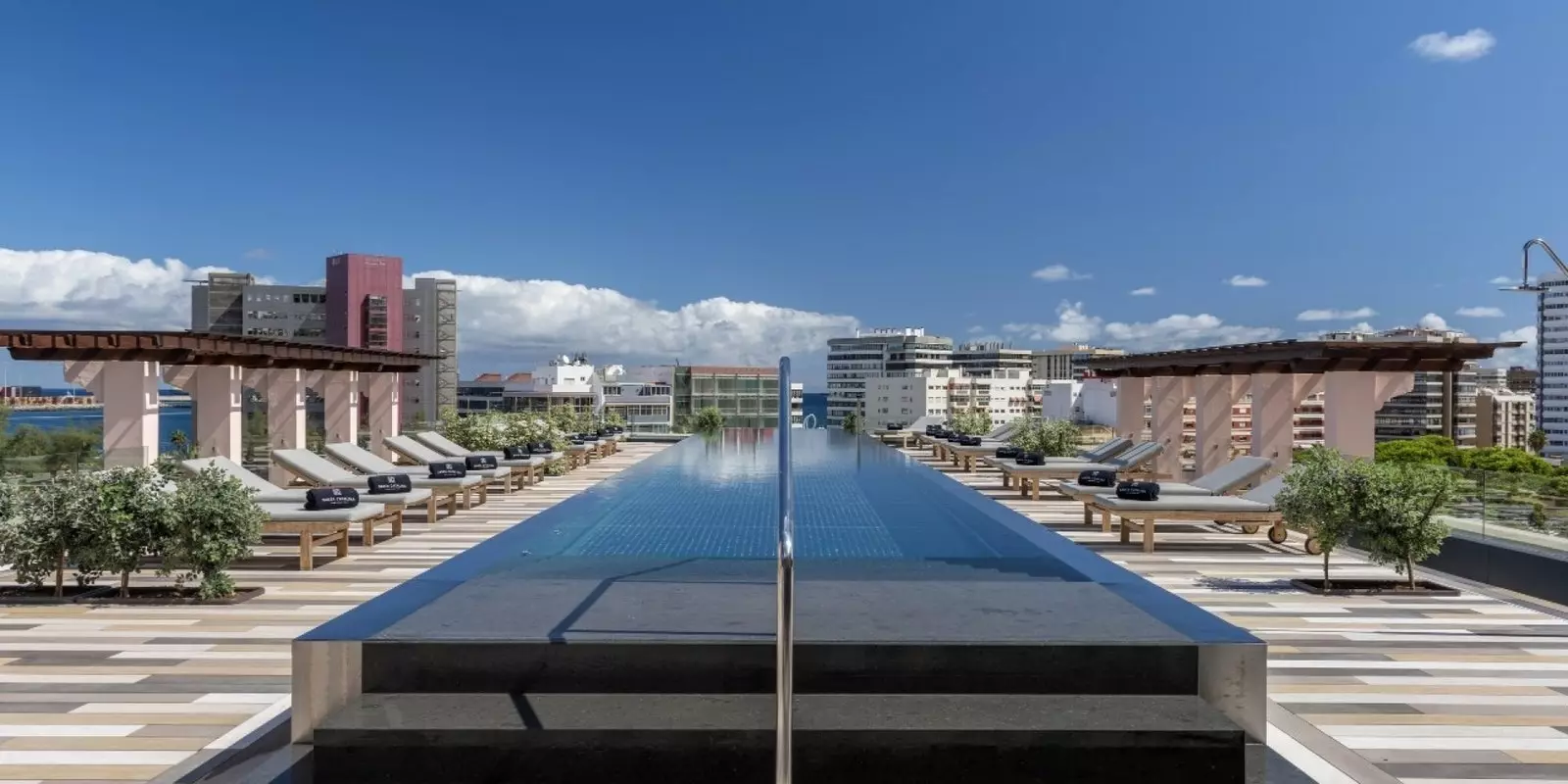
The infinity pool.
Every corner, every moment, reminds you that you are in a place steeped in history, a space that is a reference in the culture of the island and, above all, a hotel with a legacy difficult to match that is willing to transfer all the know-how of almost a century and a half of experience to the current traveler. A tribute to classic hotels and a commitment to elegance of a luxury outside of fashion and trends.
